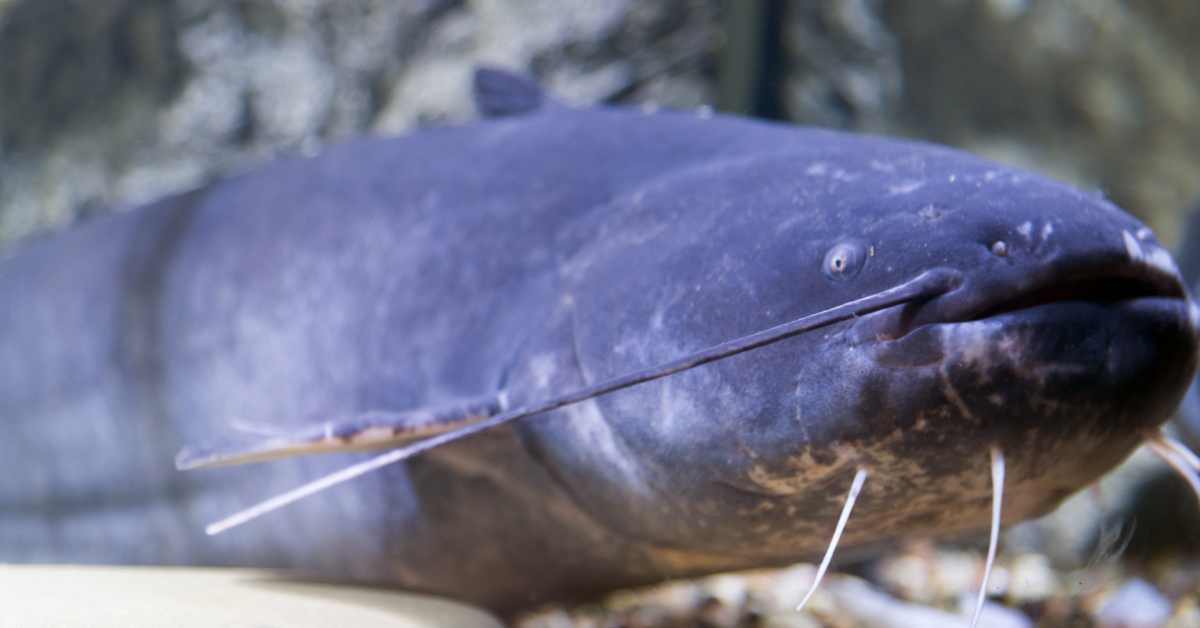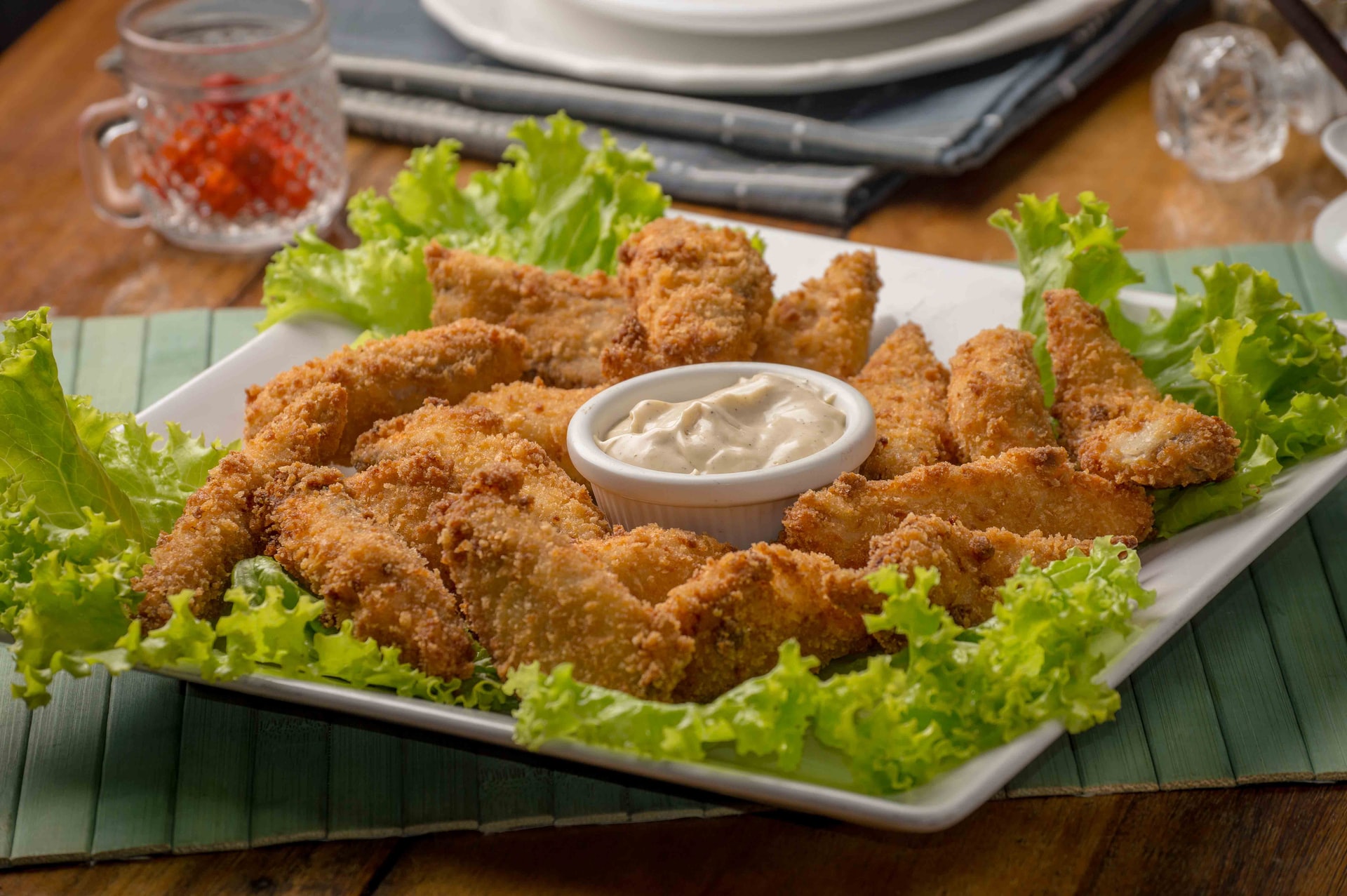Are you a seafood enthusiast wondering, “Are blue catfish good to eat?” Well, you’re in luck because I’m about to dive into the tasty world of the blue catfish. As a popular fish species in the United States, particularly in the Southern and Chesapeake Bay regions, the blue catfish is a great source of food and an exciting catch for fishing enthusiasts.
- Are Blue Catfish Good to Eat?
- Do Blue Catfish Taste Good?
- Blue Catfish vs Channel Catfish
- Blue Catfish Facts
- Health Benefits Of Eating Blue Catfish
- How Big Do Blue Catfish Get?
- What Size Blue Catfish Taste The Best?
- Nutritional Profile of Blue Catfish
- Cleaning Blue Catfish In 5 Easy Steps
- Blue Catfish Chesapeake Bay?
- Best Ways To Cook Blue Catfish
- Ideas for Leftover Blue Catfish
- Can You Freeze Blue Catfish?
- Conclusion
Are Blue Catfish Good to Eat?
Yes! Blue catfish are not only thrilling to catch but a delicious meal as well. Unlike channel cats, blues are not bottom feeders. This explains why they don’t have a “muddy” taste typically associated with eating catfish.
Their meat is white and flaky when cooked, and with a bit of seasoning, is the ultimate Southern dish.
Do Blue Catfish Taste Good?
Absolutely! Its flavor is sweet and mild, with less of the muddy flavor that’s associated with some other catfish species. The blue cat’s texture is firm and its meat holds well when cooked, especially when fried.
Blue Catfish vs Channel Catfish
When it comes to blue cat vs channel cat taste, there are several differences to be aware of.
Taste and Texture
The blue catfish’s meat is firmer and sweeter, while the channel catfish have a softer texture with a more pronounced fish flavor.
Size and Yield
The blue catfish grow to be much larger than the channel cats, providing more meat. However, smaller fish often have a more delicate taste.
Habitat and Diet
Their habitat and diet can affect their taste. Blue catfish are found in larger, deeper bodies of water and eat a varied diet, while channel catfish prefer smaller streams and are more selective in their food choices.
Blue Catfish Facts
- Blue catfish are the largest species of North American catfish.
- They are native to the Mississippi, Missouri, and Ohio River basins, and now the Chesapeake Bay
- Blue catfish have a forked tail, while channel and flathead catfish do not.
- The world record blue catfish weighed in at a whopping 143 pounds!
- They can live up to 20 years in the wild.
Health Benefits Of Eating Blue Catfish
Blue catfish aren’t just tasty, they come with a range of health benefits.
Omega-3 Fatty Acids
Blue catfish are rich in Omega-3 fatty acids, which are good for heart health.
Low-Fat Protein
They provide a substantial amount of protein, making them a great low-fat alternative to red meat.
Essential Vitamins
They also offer a healthy dose of vitamins such as B-12, which is essential for nervous system health.
Minerals
Blue cats are rich in minerals like potassium and selenium, important for maintaining overall health.
Low Mercury Levels
They have lower mercury levels compared to other seafood.
How Big Do Blue Catfish Get?
Blue catfish can reach impressive sizes. In fact, they’re the largest species of catfish in North America. While the average blue cat is around 25-40 pounds, some can grow to over 100 pounds! The size can vary based on factors like habitat, food availability, and age.
What Size Blue Catfish Taste The Best?
While the record-breaking blue catfish might sound exciting, smaller ones, usually around 2-10 pounds, are often considered the best for eating. Smaller blue cats tend to have a milder flavor and a more tender texture.
Nutritional Profile of Blue Catfish
| Nutrient | Amount (per 100g) |
|---|---|
| Calories | 105 |
| Protein | 20g |
| Fat | 3g |
| Omega-3 fatty acids | 0.2g |
| Vitamin B-12 | 1.6 μg |
| Potassium | 365 mg |
Cleaning Blue Catfish In 5 Easy Steps
- Step 1: Stabilize the fish on a flat surface.
- Step 2: Make a cut from the back of the head to the tail along the dorsal fin.
- Step 3: Cut around the head and below the fins, making sure not to puncture the gut.
- Step 4: Hold the head and pull the skin off using a pair of pliers.
- Step 5: Clean out the inside, and rinse the fillet in cold water.
Blue Catfish Chesapeake Bay?
Blue catfish have been making headlines as an invasive species in the Chesapeake Bay. They were introduced there in the 1970s for sport fishing, but with no natural predators and an insatiable appetite, these catfish have exploded in numbers.
Although they’re considered detrimental to the local ecosystem, some see a silver lining. As the population grows, so does the opportunity for fishing.
Best Ways To Cook Blue Catfish
Grilling
Grilling is a delicious and healthy way to enjoy this white fish. It adds a smoky flavor that complements the fish’s natural sweetness. Here’s a simple recipe that you can easily whip up for a delightful meal.
Ingredients:
- 4 blue catfish fillets
- Olive oil for brushing
- Salt and pepper to taste
- 2 teaspoons of garlic powder
- 2 teaspoons of paprika
- 1 lemon
- Fresh herbs (like parsley or dill) for garnish
Instructions:
- Preheat your grill to medium-high heat, around 375°F to 400°F.
- While the grill is heating up, rinse your catfish fillets and pat them dry with a paper towel.
- Brush both sides of the fillets with olive oil. This will prevent the fish from sticking to the grill.
- Season both sides of the fish with salt, pepper, garlic powder, and paprika.
- Place the fillets on the preheated grill and cook for about 5 to 7 minutes on each side. The fillets are ready when they are opaque throughout and flake easily with a fork.
- Squeeze fresh lemon juice over the grilled catfish fillets for a burst of tangy flavor.
- Garnish with fresh herbs and serve immediately.
Frying
Who can resist fried catfish? It’s a Southern-style fried favorite. A light breading and a deep fry transform this fish into a crunchy, mouthwatering meal. Check out this simple recipe.
Ingredients:
- 2 pounds of blue catfish fillets
- 1 cup of yellow cornmeal
- 1/2 cup of all-purpose flour
- 1 tablespoon of paprika
- 1 teaspoon of cayenne pepper (optional, for a bit of heat)
- Salt and black pepper to taste
- 2 large eggs
- 1/2 cup of buttermilk
- Vegetable or peanut oil for frying
- Lemon wedges and tartar sauce for serving
Instructions:
- Prepare the Catfish: Rinse the blue catfish fillets and pat them dry with paper towels. Cut the fillets into desired portions if they’re large.
- Make the Breading: In a shallow dish, mix together the cornmeal, flour, paprika, cayenne pepper, salt, and black pepper.
- Dip in Egg: In another dish, beat the eggs and mix them with buttermilk. Dip each piece of fish into the egg mixture, ensuring it’s fully coated.
- Coat the Catfish: Dredge the egg-coated catfish in the cornmeal mixture, pressing gently to ensure a good coating on all sides.
- Heat the Oil: In a large, heavy-bottomed pot or deep fryer, heat about 2 inches of oil to 375°F (190°C). You can test the oil by dropping a small amount of the breading mixture into the oil; it should sizzle and brown within a minute.
- Fry the Catfish: Using tongs, carefully lower a few pieces of the coated catfish into the hot oil. Don’t overcrowd the pan. Fry the fish for about 4-6 minutes, or until the coating is golden brown and crispy.
- Drain and Serve: Use a slotted spoon to remove the fish from the oil. Drain on paper towels to remove excess oil. Serve your fried blue catfish warm with lemon wedges and tartar sauce on the side.
Baking
For a healthier option, baking blue catfish with herbs and a drizzle of olive oil can be just as delicious.
Ingredients:
- 2 fillets of Blue Catfish
- Olive oil
- Salt and Pepper to taste
- 2 cloves of garlic, minced
- 1 Lemon (half for juice and half for slices)
- A bunch of fresh herbs (such as dill, parsley, or thyme)
Instructions:
- Preheat your oven to 375°F (190°C).
- Rinse the catfish fillets and pat them dry with a paper towel.
- Drizzle a baking dish with olive oil and place the catfish fillets in it.
- Season the fillets with salt and pepper. Then, sprinkle the minced garlic evenly over the top.
- Squeeze the juice of half a lemon over the fillets, making sure it’s evenly distributed.
- Cut the remaining half of the lemon into thin slices and place them on top of the fillets.
- Sprinkle your chosen fresh herbs over the fillets.
- Bake in the preheated oven for about 20 minutes or until the fish flakes easily with a fork.
- Once cooked, let it rest for a couple of minutes before serving.
Ideas for Leftover Blue Catfish
Got leftover blue catfish? No worries. You can flake the cooked fish into a salad for a protein boost. Another idea is to mix it into a creamy pasta sauce, making a rich and satisfying meal.
Can You Freeze Blue Catfish?
If you’ve caught more blue catfish than you can eat, don’t worry! You can freeze them. Make sure to clean and fillet the fish first, then store it in a freezer-safe bag. Press out as much air as possible to prevent freezer burn. Properly stored, blue catfish can last up to six months in the freezer.
Conclusion
So, “Are Blue Catfish Good to Eat?” Yes, indeed! They offer a unique culinary experience and are packed with essential nutrients. Whether you’re grilling, frying, or baking, blue catfish can make for a delicious meal.








